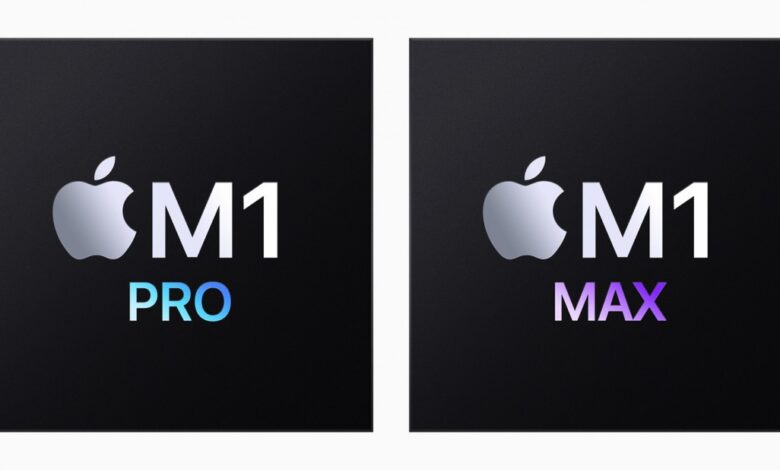
Apple Corps launches latest M1 Pro and M1 Max chipsets for Mac devices
After Apple unveiled the MacBook and other Mac devices powered by the M1 chipset in 2020, almost everyone’s eyes were on what Apple would bring in 2021. This was due to the fact that the M1 chipset was as fast as any of the Intel and AMD processors on the market, making it arguably the most advanced chipset in the M1 chipset.
Despite speculations that Apple will release a chipset called the M1X in 2021, Apple has surprised everyone by introducing two newer chipsets, the M1 Pro and the M1 Max, which are larger and more powerful than the M1 chipset. Was made.
The M1 Pro and M1 Max chipsets feature a 10 core CPU + 16 core GPU and a 10 core CPU + 32 core GPU respectively. When it comes to the M1 Pro, devices with that chipset have a maximum RAM capacity of 32 gigabytes, and devices with the M1 Max chipset have a maximum RAM capacity of 64 gigabytes.
M1 Pro for a faster experience
Apple has used a 5 nanometer process node to make the M1 Pro chipset, which has added 33.7 billion transistors to the chipset. It costs twice as much as the first generation M1 chipset. This new 10 core CPU has 8 high-performance cores and 2 high-efficiency cores. Like all these cores, this new chipset supports 70% faster than the M1 chipset.
In addition, the new M1 Pro chipset uses the same power as the 8-core chipset used to power the M1 Pro chipset compared to the standard 8-core processor available in the market. More than 70% less can be used and delivered. In addition, the M1 Pro chipset runs 1.7 times faster than a standard chipset, using as little as 30 watts of power. This chipset also supports high-resolution photo editing.
The M1 Pro chipset has a 16 core GPU that is twice as fast as the M1 and 7 times faster than the integrated graphics that usually come with an 8-core PC or laptop. At the same speed as the GPU that comes with a typical 8-core CPU, the M1 Pro chipset uses less than 40% of the same power as the 8-core CPU.
The M1 Pro chipset can go up to a maximum of 32 gigabytes of RAM and has a memory bandwidth of up to 200 gigabytes per second. This is bound to be great news for 3D designers and game developers alike.
M1 Max for a fast experience
Like the M1 Pro, the M1 Max has 10 cores and a 32 core GPU that can deliver graphics performance four times faster than the M1. Made from the M1 Pro as well as the 5 nanometer process node, the chipset has 57 billion transistors, 70% faster than the M1 Pro and 3.5 times faster than the M1.
The M1 Max is the largest chipset ever developed by Apple and consumes less than 40% less power than a typical computer’s GPU. As a result, Apple has managed to keep the temperature of the devices built using this chipset at a very low level. They have also been able to increase the battery power very well.
Using the M1 Max chipset, Final Cut Pro is capable of rendering videos 13 times faster than the previous 13-inch MacBook.
The M1 Max chipset supports a data transfer speed of 400 gigabytes per second, which is 6 times faster than an M1 device. The chipset supports a maximum RAM capacity of 64 gigabytes, making it one of the most powerful Pro Notebook chipsets in the world today.
General facts
In addition to the above, there are a few things that are common to both of these chipsets. Both the M1 Pro and Max chipsets are powered by a 16-core Neural Engine, and the chipset supports Thunderbolt 4, Secure Enclave, and ProRes video formats. In addition, two Pro XDR-type displays can be paired with devices powered by the M1 Pro, which can be upgraded to 4 when it comes to the M1 Max.
Currently, all software that supports the M1 chipset also supports the M1 Pro and M1 Max.







